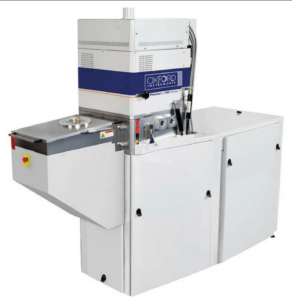Deep etching of silicon
Two reactors (SPTS Rapier, Oxford Estrelas) are dedicated to the deep anisotropic etching of Si and YOURSELF to make the switched process Bosch et le process cryogenic (continuous etching in the SF6/O2 mixture over the temperature range -70°C to -150°C).
Deposits of organic thin films under vacuum are also proposed (parylene, pentacene,...).
- Variation of the etching profile, such as the angle of the etching flanks, by adjusting the oxygen content in the SF6/O2 mixture in cryogenic etching.
1. Change of etching angle with the variation of oxygen rate in cryogenic process
- Bosch process for creating membranes, especially on SOI, with stress control, thin thicknesses, or even drilled membranes. Typically used for MEMs or BioMEMs applications.
2. Production of HF MEMs for AFM by Si Bosch etching (NAM6 team)
- Deep and very dense engravings by Bosch process, such as µ-pillars or µ-tubes. Engraving possible up to 100 µm depth on tube diameters of 2 µm-3 µm and pitch of 1 µm. Used in particular in energy storage applications.
3. etching of microtubes, diameter 2µm, pitch 1µm using the Bosch process (CSAM group, C. Lethien, RS2E)
- Deep anisotropic etchings with very low sidewall roughness by cryogenic process. Generally used for optoelectronic component realization as a replacement for Bosch etching for this reason.
- Silicon substrate feedthrough in Bosch process
- Deposition of conformal C4F8 layers on any type of surface including nanowires. Use as surface functionalization to increase contact angle in microfluidic applications, bioMEMs,...
Contact: Dmitri Yarekha
















